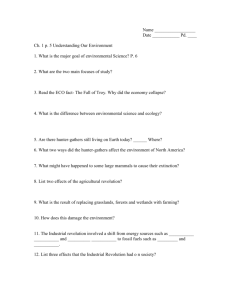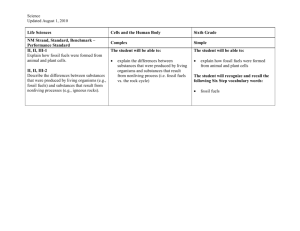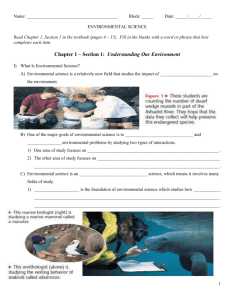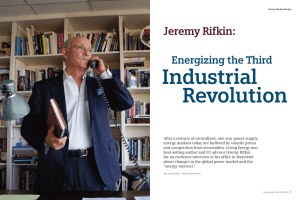Chapter 1 Section Review Questions: Answers
advertisement
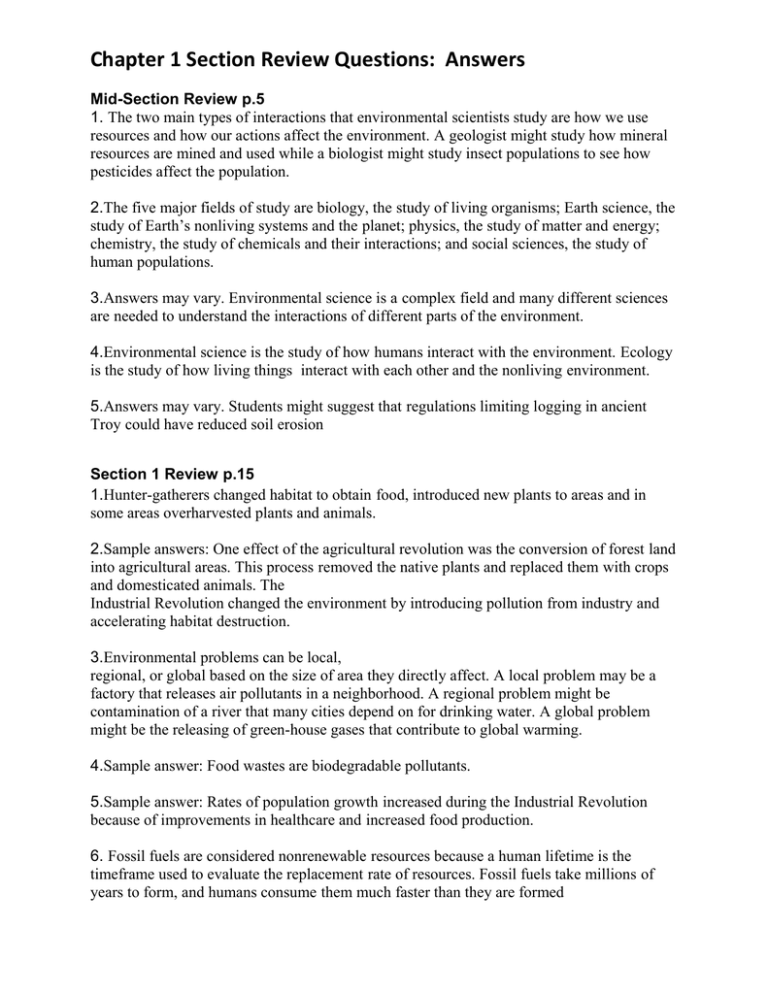
Chapter 1 Section Review Questions: Answers Mid-Section Review p.5 1. The two main types of interactions that environmental scientists study are how we use resources and how our actions affect the environment. A geologist might study how mineral resources are mined and used while a biologist might study insect populations to see how pesticides affect the population. 2.The five major fields of study are biology, the study of living organisms; Earth science, the study of Earth’s nonliving systems and the planet; physics, the study of matter and energy; chemistry, the study of chemicals and their interactions; and social sciences, the study of human populations. 3.Answers may vary. Environmental science is a complex field and many different sciences are needed to understand the interactions of different parts of the environment. 4.Environmental science is the study of how humans interact with the environment. Ecology is the study of how living things interact with each other and the nonliving environment. 5.Answers may vary. Students might suggest that regulations limiting logging in ancient Troy could have reduced soil erosion Section 1 Review p.15 1.Hunter-gatherers changed habitat to obtain food, introduced new plants to areas and in some areas overharvested plants and animals. 2.Sample answers: One effect of the agricultural revolution was the conversion of forest land into agricultural areas. This process removed the native plants and replaced them with crops and domesticated animals. The Industrial Revolution changed the environment by introducing pollution from industry and accelerating habitat destruction. 3.Environmental problems can be local, regional, or global based on the size of area they directly affect. A local problem may be a factory that releases air pollutants in a neighborhood. A regional problem might be contamination of a river that many cities depend on for drinking water. A global problem might be the releasing of green-house gases that contribute to global warming. 4.Sample answer: Food wastes are biodegradable pollutants. 5.Sample answer: Rates of population growth increased during the Industrial Revolution because of improvements in healthcare and increased food production. 6. Fossil fuels are considered nonrenewable resources because a human lifetime is the timeframe used to evaluate the replacement rate of resources. Fossil fuels take millions of years to form, and humans consume them much faster than they are formed Chapter 1 Section Review Questions: Answers Section 2 Review p. 21 1. Answers may vary. Mexico has characteristics of developing and developed countries. 2.Answers may vary. Critical thinking is a skill that enables one to evaluate ideas and information. 3. The law of supply and demand states that the greater the demand for a limited supply of something is, the more the supply is worth. Oil is one example. When demand is high the price usually increases. 4. Answers may vary. There are many other factors that might affect the price of oil. The cost of shipping and transporting the oil may increase. The cost of finding and drilling wells may increase the price. Students may also note that the majority of oil producing nations are part of a trade organization called OPEC. OPEC can control the price and production of oil. 5. Answers may vary. “The Tragedy of the Commons” states that when land held in common is used for grazing, people tend to overgraze the land. When land is divided up and privately owned, people tend not to overgraze the land. To some extent this is accurate. People tend to care more for an area when it is under their direct control

